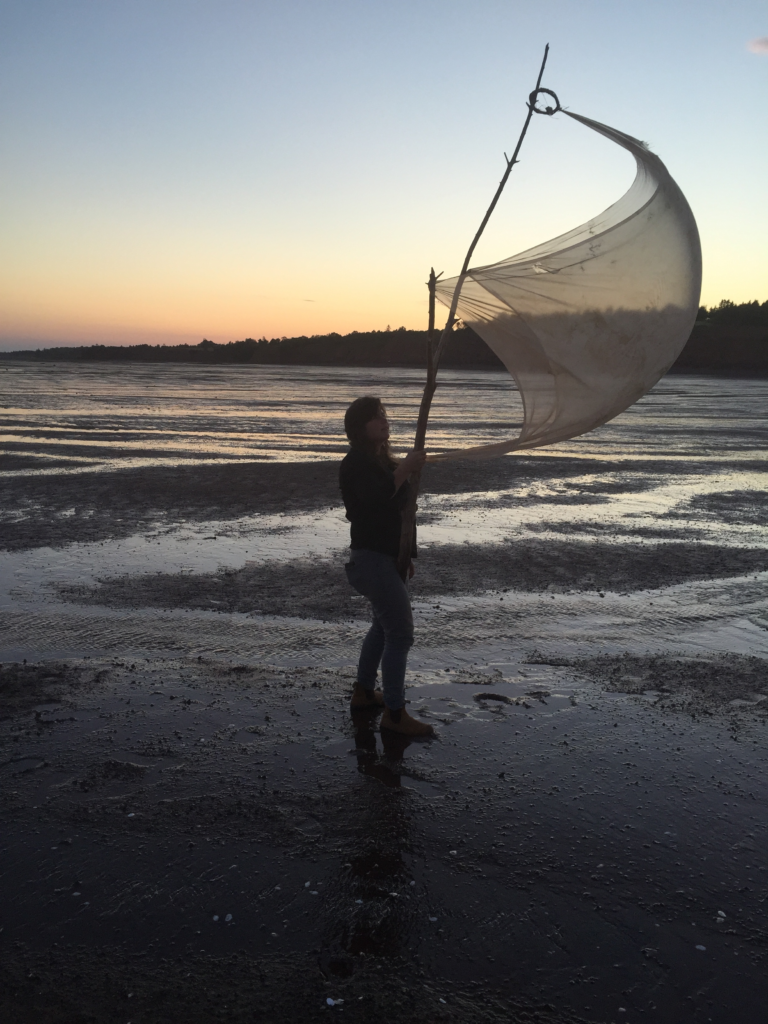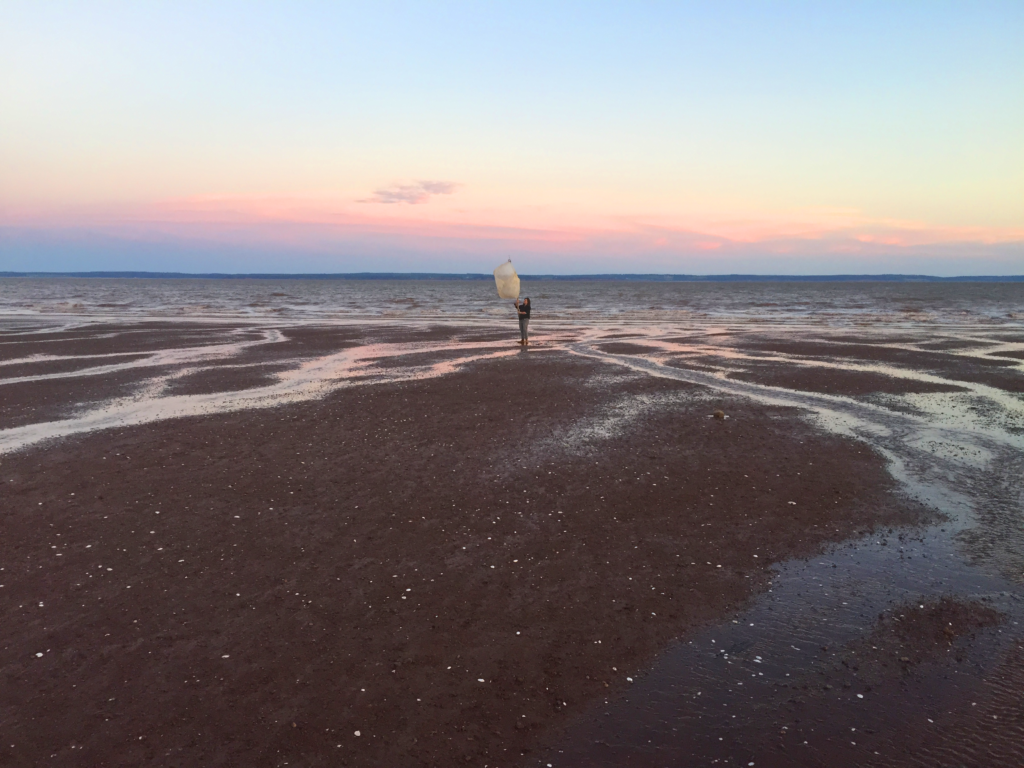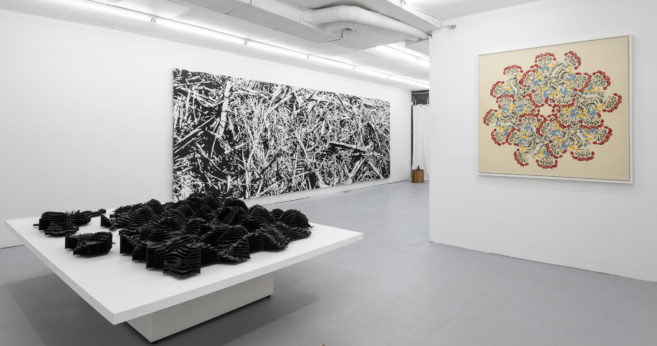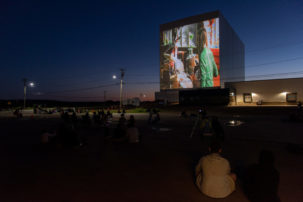Lindsay Dobbin’s solo exhibition “Arrival” at the Ross Creek Centre for the Arts is an immersive, meditative experience in sound, poetry and video inspired by the highest tides in the world. During one tide cycle at the Minas Basin on the Bay of Fundy, 160 billion tonnes of seawater flow in and out at levels ranging from 14 to 16 metres. Dobbin—a Kanien’kehá:ka (Mohawk)/Acadian/Irish artist, musician, water protector and educator living in K’jipuktuk/Halifax, who has lived and often works on the Bay of Fundy—offers viewers an experience of “deep listening” with the tides at the Minas Basin to slow down time and think about nature, being, memory within the body, ancestors, and history.
“Arrival” grows out of Dobbin’s six-hour water-drumming performance Drumming the Tide (2015-16), created as part of a White Rabbit Arts Residency. On an August day when the tides were at the peak of a 28-year cycle and elevated by a waxing moon, Dobbin started drumming at the water’s edge at Bay of Fundy shore and followed the tide in. Dobbin walked at the pace of the water, beating a drum at every step. The walk “was an internal journey as much as it was an external journey,” says Dobbin. “It was entering a different rhythm in time.” A screen dominates the back wall in “Arrival,” and shows the incoming tide at the Minas Basin, its animated mud-brown water simmering like porridge in a pot. The exhibition includes tonal soundscapes and poetry exploring concepts of time, ancestry, memory and kinship with a reverence for water and nature.
Dobbin grew up on New Brunswick’s Kennebecasis River, which flows into the Bay of Fundy, and spent summers exploring sea life on the mud flats at St. Martins. As someone who has loved the Bay of Fundy their whole life, Dobbin wanted to understand the rhythm of the tide by being right in it. “Walking and having the sonic marker [of a drum beat] meant it became an embodied sense. When you allow something to become a part of you, there is a whole other layer of understanding,” the artist explains. Fossils that could be read as the first footprints of life are common to the Minas Basin. Dobbin says, “This part of the world is such a primordial place. Where the tide goes out, I imagine this is what Earth was like in the beginning. There is an accessibility to ancient information about what happened on Earth—like the first footprints. The tide helps reveal the past and it feels so ancient. When we think of our origins as humans, we realized we came out of the water. The tide helps reveal that past.”
In their art practice, Dobbin seeks knowledge from the land and listens intently to nature (something their family always encouraged). Dobbin says, “I have an early memory of my grandmother asking me to listen to the wind blowing through the birch trees and asking me what the trees were saying.” Dobbin, who will always return to the tides, works with nature to express connectivity: “I become aware of the creative vision of nature and I put myself in spaces and create frameworks to allow that to happen. [The Minas Basin] feels like a very sacred place for me, so listening and waiting to see what’s next is a really important part of the process.” With ancestral Indigenous territories in Ontario (though Dobbin grew up in New Brunswick on the Bay of Fundy), Dobbin seeks to learn Indigenous culture from the land and through kinship with their Mi’kmaw and other Indigenous friends. Dobbin experienced an internal journey as they walked in with the tide on The Bay of Fundy, which they share with viewers. “Arrival” asks its viewers to sit, listen, look and slow down. It is here that the daily timetable dissolves and one can arrive at land-based perspectives and perceptions.

Lindsay Dobbin performing Drumming the Tide/Body Sail on the Bay of Fundy, NS, in 2015. Photo: Rob Cameron.

Lindsay Dobbin performing Drumming the Tide/Body Sail on the Bay of Fundy, NS, in 2015. Photo: Rob Cameron.

"Arrival," Lindsay Dobbin, 2019, video. Courtesy the artist.

 Lindsay Dobbin performing Drumming the Tide/Body Sail on the Bay of Fundy, NS, in 2015. Photo: Rob Cameron.
Lindsay Dobbin performing Drumming the Tide/Body Sail on the Bay of Fundy, NS, in 2015. Photo: Rob Cameron.






